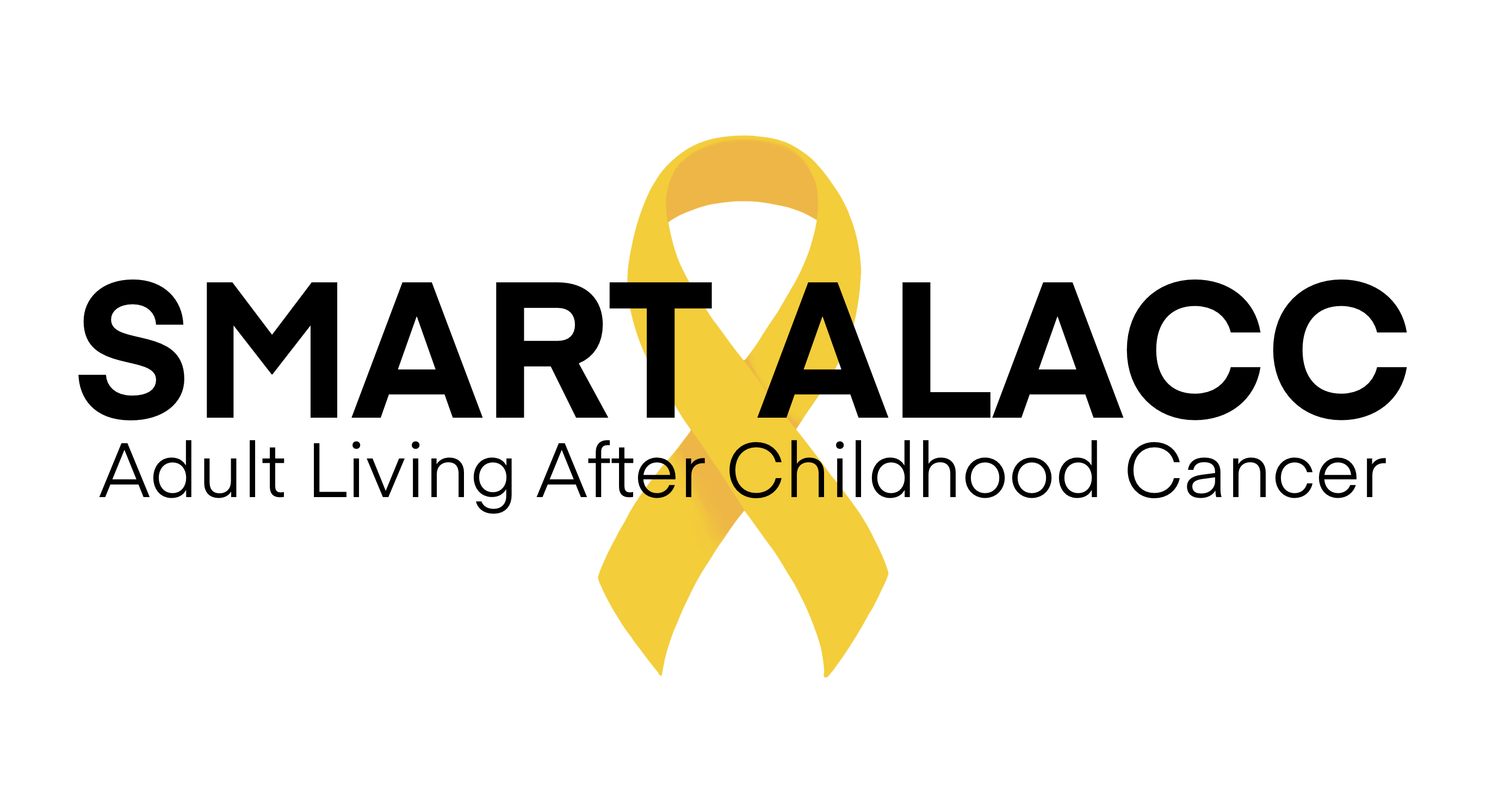
Smart Alacc Care Plan
Healthcare Provider Summary
Dear Healthcare Professional
A survivorship care plan was created for or by your patient using the Smart ALACC care plan tool at www.smartalacc.oncolink.org. This report is a summary of the long-term side effects the survivor may be at risk for and recommendations for their follow-up care. The report is generated from the treatment information entered by the patient or their healthcare provider. The summary provided is supported by cancer survivorship literature and expert opinion, but should not replace communication with the patient’s oncology team. Suggested management and follow-up points are broken down according to the toxicity-causing treatment (i.e. medical therapy, surgery, or radiation).
Keep in mind that survivors should continue to have screening for other cancers per the American Cancer Society guidelines and routine health maintenance as recommended by the USPTF.
You have
You received the following treatments for Retinoblastoma
- Removal of the Eye (Ennucleation)
- Carboplatin (Paraplatin®)
- Etoposide (VePesid®, VP-16)
- Melphalan given into the eye (Intravitreal)
- Vincristine (Oncovin®, VCR)
- Radiation to the Eye
- Proton-based radiation
Follow Up Care for Retinoblastoma
Each pediatric cancer survivor is unique because of their disease processes and exposures. A survivorship care plan is meant to tailor follow up to survivor needs, maximizing prevention of late effects and avoiding unnecessary tests or procedures.
Risks Related to Surgery
Removal of the Eye (Ennucleation)
- After enucleation, patients are at risk of poor prosthesis fit, orbital hypoplasia, and emotional distress related to cosmetic appearance.
- Patients should be evaluated once annually by an ocularist and ophthalmologist to assess prosthetic fit and evaluate for other vision concerns.
Risks Related to Medications
Peripheral Neuropathy
- Peripheral neuropathy is a side effect that develops during or shortly after treatment, but can become a chronic problem for some survivors.
- It does not develop as a late effect and if a survivor does develop symptoms suggestive of neuropathy after therapy, other causes should be investigated.
- Assess for any limitations/safety hazards due to toxicity.
- Pain management with tricyclic antidepressants, gabapentin, and pregabalin. Refer to pain specialist for pain that is not well managed.
- Refer for physical/occupational therapy for symptomatic neuropathy and assessment of hand function.
Development of Kidney Problems
- Patients treated with these agents can develop renal insufficiency, hypertension, or electrolyte wasting.
- Monitor blood pressure at least annually.
- Check electrolytes and kidney function at entry into survivorship care, and repeat as clinically indicated.
Hearing Changes or Loss
- Evaluate for hearing loss, tinnitus, and vertigo as part of annual physical exam.
- Otoscopic exam annually.
- Patients treated with cisplatin or carboplatin should have audiometric testing every 5 years beginning at age 13.
Elevated Cholesterol Levels
- Survivors who received cisplatin and/or carboplatin may develop elevated cholesterol at earlier than expected ages. Monitor cholesterol annually and treat accordingly.
Risk of Developing Osteoporosis
- Long term use of corticosteroids, receiving chemotherapy medications, radiation to weight bearing bones, hormone therapy, gastrectomy and orchiectomy all increase the risk of developing osteoporosis.
- Calcium intake of 1000-1200 mg per day plus Vitamin D 800-1000 IU per day is recommended (ideally from food sources, and supplements when diet is not sufficient).
- Encourage smoking cessation and minimal or no caffeine or alcohol intake.
- Promote weight bearing and strength training exercise 2-3 times per week.
- Evaluate bone density with DEXA scan at entry into survivorship care, and repeat as clinically indicated.
Raynaud's Phenomenon
- Monitor blood pressure annually.
- Counsel on exacerbating factors (cold, vasoconstrictors such as pseudoephedrine and stimulants, cocaine, and nicotine)
- Avoid prescribing vasoconstrictors.
- Encourage smoking cessation.
Learning Differences
- Neurocognitive changes as a result of cancer therapy may include: short term memory, multi-tasking, new learning, reading comprehension, working with numbers and a decrease in concentration ability.
- Cancer survivors should be screened annually with attention to educational/vocational progress.
- Referral to a survivorship program or for neurocognitive testing and cognitive rehab may be of value for survivors with cognitive symptoms.
- Evaluate for treatable causes such as hypothyroidism, depression or anxiety.
Understanding New Research and Therapies
- Many cancer treatments today have not been available long enough to determine what effects they may cause in years after treatment.
- Evaluate for any new or worsening symptoms that may be unexplained by other factors.
Risk of Developing a Secondary Cancer
- Certain chemotherapy agents or radiation can lead to the development of leukemia, MDS, or lymphoma. This typically occurs 4-10 years after therapy, but could occur as soon as 1-3 years after therapy (early onset is most common with etoposide or teniposide).
- Evidence shows little benefit of sending screening CBCs in the absence of clinical signs/symptoms. Obtain a CBC with differential for concerning signs and symptoms.
Fertility Concerns for Female Survivors
- Due to cancer treatments, survivors may have sexual health and/or fertility issues after treatment.
- Refer to a reproductive specialist (endocrinology or gynecology), experienced in working with cancer survivors, for signs of ovarian hormone deficiency and/or fertility assessment.
- Pregnant survivors should consider being followed by a high-risk obstetrician.
- Survivors should be aware of the need for contraception and that recovery of fertility may occur years after therapy.
- Bone density evaluation is recommended in patients with estrogen deficiency.
Eye Health
- Patients are at risk for developing cataracts at an early age. Damage to the lacrimal glands can result in dry eyes, increasing the risk of corneal infections. Any eye pain should be evaluated promptly.
- Other concerns include shrinkage or loss of the eye, corneal abrasions and ulcers, glaucoma and optic nerve damage.
- Ophthalmologic evaluation yearly.
Maintaining Healthy Skin
- Skin is more sun-sensitive after radiation. Counsel to use sunscreen diligently.
- Evaluation by a wound care specialist for any non-healing ulcers.
- Skin can develop chronic swelling, wounds, changes in texture and color.
A Note on Fatigue
- Evaluate any new or worsening fatigue.
- Encourage regular exercise to help combat fatigue.
